Intro
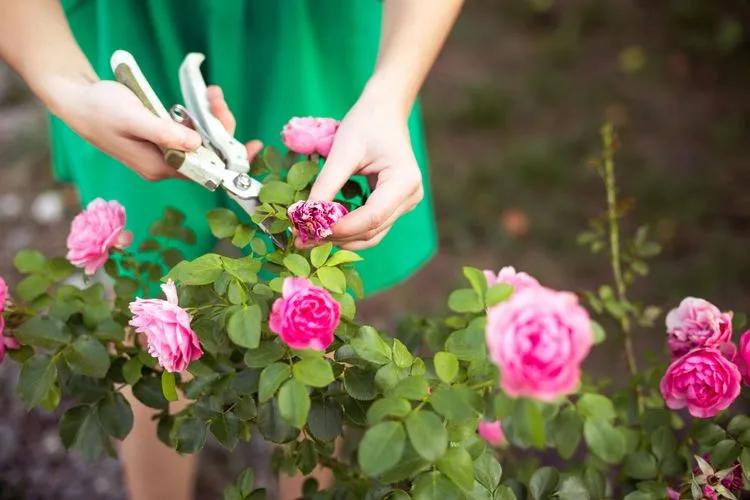 Pruning, like any other skill, requires knowing what you are doing to achieve success. The old idea that anyone with a chain saw or a pruning saw can be a landscape pruner is far from the truth. More trees are killed or ruined each year from improper pruning than by pests. Remember that pruning is the removal or reduction of certain plant parts that are not required, that are no longer effective, or that are of no use to the plant.
To promote growth and deter mold and pests such as fungus gnats, it is sometimes necessary to trim and remove dead or dying leaves from your plant. This helps the plant send energy to the healthiest leaves, as yellow and brown crispy leaves will not turn green again.
Pruning removes stored energy and encourages new growth so, after pruning, feed the soil to sustain and nourish regrowth.
Each plant such as houseplants, fruit trees, berries, flowering trees, shrubs, and vines, perennials, evergreens has its own approach to trimming.
While you don't have to worry about regularly pruning indoor plants like you would many outdoor plants, at some point you'll have to get out your shears for some cleanup. Maybe you need to cut away dead leaves or branches to keep the plant presentable. Or perhaps you'd like to encourage a more balanced growth pattern. Some runaway plants might be eating up your living room while others might look spindly and in need of a trim. Whatever the reason, it's important to know how to properly prune your houseplants, so you don't create undue stress for your windowsill companions.
Pruning, like any other skill, requires knowing what you are doing to achieve success. The old idea that anyone with a chain saw or a pruning saw can be a landscape pruner is far from the truth. More trees are killed or ruined each year from improper pruning than by pests. Remember that pruning is the removal or reduction of certain plant parts that are not required, that are no longer effective, or that are of no use to the plant.
To promote growth and deter mold and pests such as fungus gnats, it is sometimes necessary to trim and remove dead or dying leaves from your plant. This helps the plant send energy to the healthiest leaves, as yellow and brown crispy leaves will not turn green again.
Pruning removes stored energy and encourages new growth so, after pruning, feed the soil to sustain and nourish regrowth.
Each plant such as houseplants, fruit trees, berries, flowering trees, shrubs, and vines, perennials, evergreens has its own approach to trimming.
While you don't have to worry about regularly pruning indoor plants like you would many outdoor plants, at some point you'll have to get out your shears for some cleanup. Maybe you need to cut away dead leaves or branches to keep the plant presentable. Or perhaps you'd like to encourage a more balanced growth pattern. Some runaway plants might be eating up your living room while others might look spindly and in need of a trim. Whatever the reason, it's important to know how to properly prune your houseplants, so you don't create undue stress for your windowsill companions.
Houseplant prune
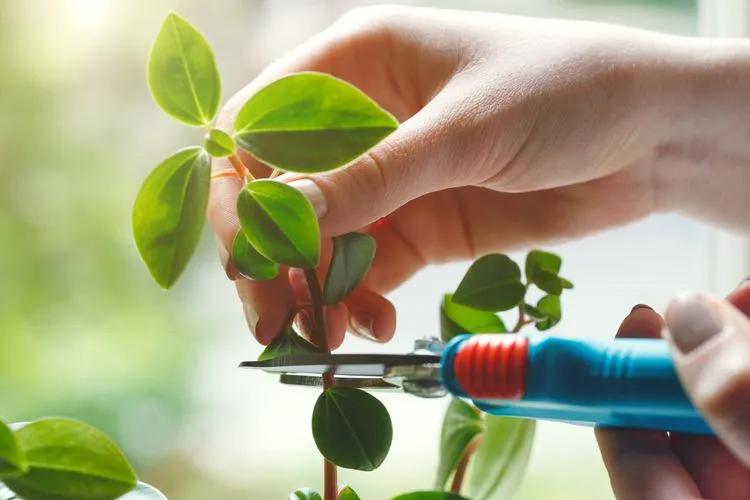 Houseplants should typically be pruned at the beginning of the growing season, which is late winter or early spring for many varieties. However, woody indoor plants are an exception to this seasonal rule, requiring year-round pruning to remove dead leaves and branches.
A good rule of thumb for flowering species is to prune them just after they have finished flowering. If you prune right before they bloom, you'll be removing unopened buds that would otherwise turn into flowers.
What You'll Need: Pruning shears, Kitchen scissors, Gardening gloves (optional).
At first, take a step back from your houseplant, and look at its structure and shape. Notice whether it is growing spindly, looks fuller on one side, or contains any diseased or dying foliage. Also, check for areas of potential new growth, known as "latent buds." Buds typically occur where the leaf joins the plant stem.
If the plant's branches are thick, such as those of an indoor tree, use pruning shears. If they are slender, kitchen scissors may give you a cleaner cut.
Clip or pinch off dead leaves and stems. If stems have rotted at the root, pull them out, and make sure to let the soil dry out before the plant's next watering.
If you're working with a flowering houseplant, remove all spent flowers by pinching them off or clipping them back as close to the main stem as possible.
Make judicious cuts to encourage new growth. Cut just before a leaf node. Or when cutting back larger stems, cut as close to the main stem as possible. However, do not remove more than 25 percent of the plant.
Proper pruning requires an understanding of the plant's growth pattern. Plants grow from the tip down, meaning new growth emerges from the dominant bud at the end of a branch or stem.
To prune a plant to encourage bushy new growth, snip off the dominant buds on select stems, staggering the cuts to encourage varied growth. Trim some branches back by a quarter, others by a half, and still others all the way back to their base. This way, when the plant leafs out again, the random growth pattern will fill it out.
Deadheading is a type of pruning that simply involves removing any dead flowers. As a plant blooms, it puts energy into its flowers at the expense of new growth. Even as a flower is dying, it still consumes energy from the plant. So to prolong the blooming period and encourage healthy growth, deadheading is often necessary.
When pruning, cleanliness is important. Any cut made to a plant's tissue can expose it to disease. So keep your pruning instruments sharp, and clean and disinfect them between each use with a mild bleach-and-water solution.
Most houseplant cuttings can be saved, rooted in a cup of water, and then planted to form new houseplants. Succulent clippings can even be propagated by planting them directly in a pot of soil and keeping it moist. After a few weeks, you should have new plants growing.
Pruning vines is very similar to pruning general houseplants. However, it involves a little more work. Indoor vines should be encouraged to grow along a support with any wandering stems pruned back. With vines, you might have to do a substantial pruning in the spring or summer to cut them back to a manageable form. Many vines are notoriously rampant growers when they're healthy.
Some houseplants rarely need pruning, and others should never be pruned at all. Palms and Norfolk Island pines both form a terminal dominant bud but do not possess latent buds. That means removing the dominant bud will kill the plant, so it's best to let these species be.
Similarly, many varieties of orchids cannot be pruned beyond removing dead flower spikes. Do so at the point where the spike comes out of the leaves, and hopefully you'll see blooms again after several months.
Although the task of trimming beautiful foliage is sometimes hard for gardeners to swallow, regular pruning keeps most plants healthy and encourages new growth. But when and what to prune depends on the type of plant and the climate you live in. For instance, flowering and fruiting plants prefer to be cut back in late winter or early spring to spur a hearty crop. Trees and shrubs that bloom in the spring start setting new buds as soon as the old flowers have fallen, so it's crucial to prune before those new buds come in. And many other plants need continual trimming to remain vigorous.
Figuring out when to prune your plants can be confusing, but luckily pruning at the wrong time is rarely fatal. Off-cycle pruning might result in fewer flowers or fruit, but it usually won’t harm the plant in the long run. However, avoid pruning too late in the growing season. Doing so will encourage tender new growth that will die in winter weather.
Most fruit trees and berry plants need to be pruned while they are dormant. Failure to do so will result in the plant's steady decline, as it will send out suckers that direct energy away from fruiting branches. The exception to this rule is spring-flowering trees and shrubs. These need to be pruned soon after their flowers fade in late spring and early summer.
Furthermore, most perennial plants need to be cut back entirely either before or after the growing season. And they require regular pruning and deadheading all season long.
Houseplants should typically be pruned at the beginning of the growing season, which is late winter or early spring for many varieties. However, woody indoor plants are an exception to this seasonal rule, requiring year-round pruning to remove dead leaves and branches.
A good rule of thumb for flowering species is to prune them just after they have finished flowering. If you prune right before they bloom, you'll be removing unopened buds that would otherwise turn into flowers.
What You'll Need: Pruning shears, Kitchen scissors, Gardening gloves (optional).
At first, take a step back from your houseplant, and look at its structure and shape. Notice whether it is growing spindly, looks fuller on one side, or contains any diseased or dying foliage. Also, check for areas of potential new growth, known as "latent buds." Buds typically occur where the leaf joins the plant stem.
If the plant's branches are thick, such as those of an indoor tree, use pruning shears. If they are slender, kitchen scissors may give you a cleaner cut.
Clip or pinch off dead leaves and stems. If stems have rotted at the root, pull them out, and make sure to let the soil dry out before the plant's next watering.
If you're working with a flowering houseplant, remove all spent flowers by pinching them off or clipping them back as close to the main stem as possible.
Make judicious cuts to encourage new growth. Cut just before a leaf node. Or when cutting back larger stems, cut as close to the main stem as possible. However, do not remove more than 25 percent of the plant.
Proper pruning requires an understanding of the plant's growth pattern. Plants grow from the tip down, meaning new growth emerges from the dominant bud at the end of a branch or stem.
To prune a plant to encourage bushy new growth, snip off the dominant buds on select stems, staggering the cuts to encourage varied growth. Trim some branches back by a quarter, others by a half, and still others all the way back to their base. This way, when the plant leafs out again, the random growth pattern will fill it out.
Deadheading is a type of pruning that simply involves removing any dead flowers. As a plant blooms, it puts energy into its flowers at the expense of new growth. Even as a flower is dying, it still consumes energy from the plant. So to prolong the blooming period and encourage healthy growth, deadheading is often necessary.
When pruning, cleanliness is important. Any cut made to a plant's tissue can expose it to disease. So keep your pruning instruments sharp, and clean and disinfect them between each use with a mild bleach-and-water solution.
Most houseplant cuttings can be saved, rooted in a cup of water, and then planted to form new houseplants. Succulent clippings can even be propagated by planting them directly in a pot of soil and keeping it moist. After a few weeks, you should have new plants growing.
Pruning vines is very similar to pruning general houseplants. However, it involves a little more work. Indoor vines should be encouraged to grow along a support with any wandering stems pruned back. With vines, you might have to do a substantial pruning in the spring or summer to cut them back to a manageable form. Many vines are notoriously rampant growers when they're healthy.
Some houseplants rarely need pruning, and others should never be pruned at all. Palms and Norfolk Island pines both form a terminal dominant bud but do not possess latent buds. That means removing the dominant bud will kill the plant, so it's best to let these species be.
Similarly, many varieties of orchids cannot be pruned beyond removing dead flower spikes. Do so at the point where the spike comes out of the leaves, and hopefully you'll see blooms again after several months.
Although the task of trimming beautiful foliage is sometimes hard for gardeners to swallow, regular pruning keeps most plants healthy and encourages new growth. But when and what to prune depends on the type of plant and the climate you live in. For instance, flowering and fruiting plants prefer to be cut back in late winter or early spring to spur a hearty crop. Trees and shrubs that bloom in the spring start setting new buds as soon as the old flowers have fallen, so it's crucial to prune before those new buds come in. And many other plants need continual trimming to remain vigorous.
Figuring out when to prune your plants can be confusing, but luckily pruning at the wrong time is rarely fatal. Off-cycle pruning might result in fewer flowers or fruit, but it usually won’t harm the plant in the long run. However, avoid pruning too late in the growing season. Doing so will encourage tender new growth that will die in winter weather.
Most fruit trees and berry plants need to be pruned while they are dormant. Failure to do so will result in the plant's steady decline, as it will send out suckers that direct energy away from fruiting branches. The exception to this rule is spring-flowering trees and shrubs. These need to be pruned soon after their flowers fade in late spring and early summer.
Furthermore, most perennial plants need to be cut back entirely either before or after the growing season. And they require regular pruning and deadheading all season long.
Pruning Fruit Trees
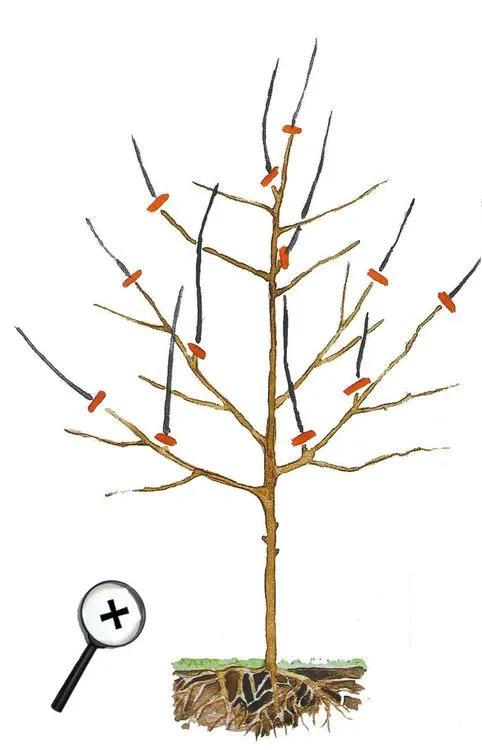 If you are growing a tree for its fruit, make pruning a high priority. Heading cuts, or cutting the ends of branches, concentrate each branch's energy and encourage it to produce more fruit the following season. Thinning cuts, or removing entire limbs, allow you to take out unruly suckers and dead or diseased limbs.
the late winter or early spring, inspect your tree to see where it needs pruning. Take note of any branches that have grown over 2 feet. They will be unlikely to bear fruit again.
Decide which branches to keep and which to remove based on health, shape, growth pattern, and personal preference. Sometimes it's helpful to mark branches for pruning with pieces of string as you're observing the whole tree.
Use loppers or a handsaw to remove dead or diseased branches, as well as any unnecessary new branches that might divert energy from the fruit-bearing ones. Branches growing downward should be the first to go.
With your loppers, make heading cuts on old growth around the tree to shape it. Each cut will increase the number of lateral branches.
If you are growing a tree for its fruit, make pruning a high priority. Heading cuts, or cutting the ends of branches, concentrate each branch's energy and encourage it to produce more fruit the following season. Thinning cuts, or removing entire limbs, allow you to take out unruly suckers and dead or diseased limbs.
the late winter or early spring, inspect your tree to see where it needs pruning. Take note of any branches that have grown over 2 feet. They will be unlikely to bear fruit again.
Decide which branches to keep and which to remove based on health, shape, growth pattern, and personal preference. Sometimes it's helpful to mark branches for pruning with pieces of string as you're observing the whole tree.
Use loppers or a handsaw to remove dead or diseased branches, as well as any unnecessary new branches that might divert energy from the fruit-bearing ones. Branches growing downward should be the first to go.
With your loppers, make heading cuts on old growth around the tree to shape it. Each cut will increase the number of lateral branches.
Pruning Berries
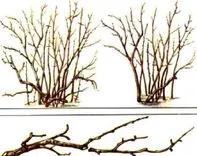 Raspberry and blackberry bushes in particular benefit from removing all the weak and broken canes (or stems) to allow sunlight to reach more of the bush. Make sure to wear protective clothing when pruning berries, as the thorns can be painful.
During October through March, remove any weak, dead, or diseased canes with pruning shears.
Thin the remaining canes to 10 to 12 per bush by cutting unruly canes at their base.
Trim the height of the entire bush, so it's no more than five feet tall.
Raspberry and blackberry bushes in particular benefit from removing all the weak and broken canes (or stems) to allow sunlight to reach more of the bush. Make sure to wear protective clothing when pruning berries, as the thorns can be painful.
During October through March, remove any weak, dead, or diseased canes with pruning shears.
Thin the remaining canes to 10 to 12 per bush by cutting unruly canes at their base.
Trim the height of the entire bush, so it's no more than five feet tall.
Pruning Flowering Trees, Shrubs, and Vines
In general, you can prune flowering plants at any time. However, paying attention to when your plant blooms and pruning soon after will yield the showiest floral display. Note Plant Bloom Time. During the First Growing Season, Note When Your Plant Blooms Remove Unwanted Branches. Once the blooms fade, use your shears or loppers to remove any dead, weak, or diseased branches. Remove Suckers at the Base of the Tree or Plant. These are unlikely to produce hearty blooms. Shape the Plant. Using your shears, make heading cuts to shape the plant. Cut just beyond a healthy bud, and angle the cut at 45 degrees.
Pruning Perennials
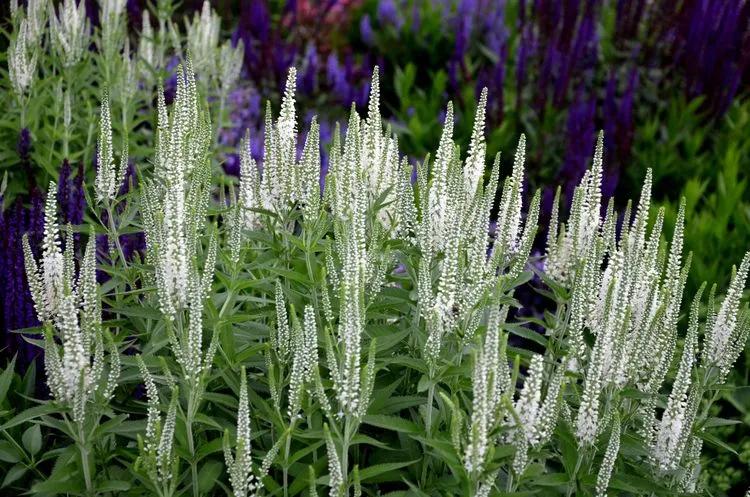 Perhaps the most labor-intensive plants to prune are non-woody perennials, but the task is pretty straightforward. Regular pruning and deadheading (pinching off spent flowers) throughout the growing cycle can create a perfectly manicured perennial bed.
Cut Back on Dead Growth. In the fall or early spring, use your shears to cut back all dead growth to the ground.
Start Training Your Plant. As the plant grows, train it by cutting off or digging up parts that become unruly. Dug up perennial plants can be replanted or gifted to other gardeners.
Pinch Flowers Below the Bloom. During the growing season, regularly pinch or cut off spent flowers just below the bloom to maintain appearance.
Trim Vigorous, Non-Blooming Growth With Shears Throughout the Season.
Perhaps the most labor-intensive plants to prune are non-woody perennials, but the task is pretty straightforward. Regular pruning and deadheading (pinching off spent flowers) throughout the growing cycle can create a perfectly manicured perennial bed.
Cut Back on Dead Growth. In the fall or early spring, use your shears to cut back all dead growth to the ground.
Start Training Your Plant. As the plant grows, train it by cutting off or digging up parts that become unruly. Dug up perennial plants can be replanted or gifted to other gardeners.
Pinch Flowers Below the Bloom. During the growing season, regularly pinch or cut off spent flowers just below the bloom to maintain appearance.
Trim Vigorous, Non-Blooming Growth With Shears Throughout the Season.
Working With Evergreens
 Many gardeners leave their evergreen trees alone, which is probably a good idea. Evergreen trees don’t really need to be pruned, and doing so can stress or distort the tree. For this reason, choose a dwarf evergreen if you have limited space.
That said, there are times when evergreen bushes need to be cut into a hedgerow or trimmed to branch out and become fuller. This requires mindful, minimal trimming during the height of the growing season.
If you haven't been pruning your fruit-bearing bushes regularly, you might need to do some rejuvenation pruning to remove anything that's overgrown or dead. You can cut back the entire plant to 6 to 12 inches of growth (basically starting over), or you can prune gradually over time.
Unlike other fruit trees, peach trees should not be pruned while dormant. This delicate tree can suffer dieback when pruned in the winter. Pruning a peach tree during dormancy can also result in a less cold-hardy tree moving forward.
Proper pruning enhances the beauty of almost any landscape tree and shrub, while improper pruning can ruin or greatly reduce its landscape potential. In most cases, it is better not to prune than to do it incorrectly. In nature, plants go years with little or no pruning, but man can ruin what nature has created.
Pruning is one of the most satisfying gardening jobs. In only a few minutes you can turn a scruffy-looking plant back into an elegant and stylish feature.
Also, with some judicious cuts you can allow more light to flow into your garden, creating a whole new look.
Many gardeners leave their evergreen trees alone, which is probably a good idea. Evergreen trees don’t really need to be pruned, and doing so can stress or distort the tree. For this reason, choose a dwarf evergreen if you have limited space.
That said, there are times when evergreen bushes need to be cut into a hedgerow or trimmed to branch out and become fuller. This requires mindful, minimal trimming during the height of the growing season.
If you haven't been pruning your fruit-bearing bushes regularly, you might need to do some rejuvenation pruning to remove anything that's overgrown or dead. You can cut back the entire plant to 6 to 12 inches of growth (basically starting over), or you can prune gradually over time.
Unlike other fruit trees, peach trees should not be pruned while dormant. This delicate tree can suffer dieback when pruned in the winter. Pruning a peach tree during dormancy can also result in a less cold-hardy tree moving forward.
Proper pruning enhances the beauty of almost any landscape tree and shrub, while improper pruning can ruin or greatly reduce its landscape potential. In most cases, it is better not to prune than to do it incorrectly. In nature, plants go years with little or no pruning, but man can ruin what nature has created.
Pruning is one of the most satisfying gardening jobs. In only a few minutes you can turn a scruffy-looking plant back into an elegant and stylish feature.
Also, with some judicious cuts you can allow more light to flow into your garden, creating a whole new look.
